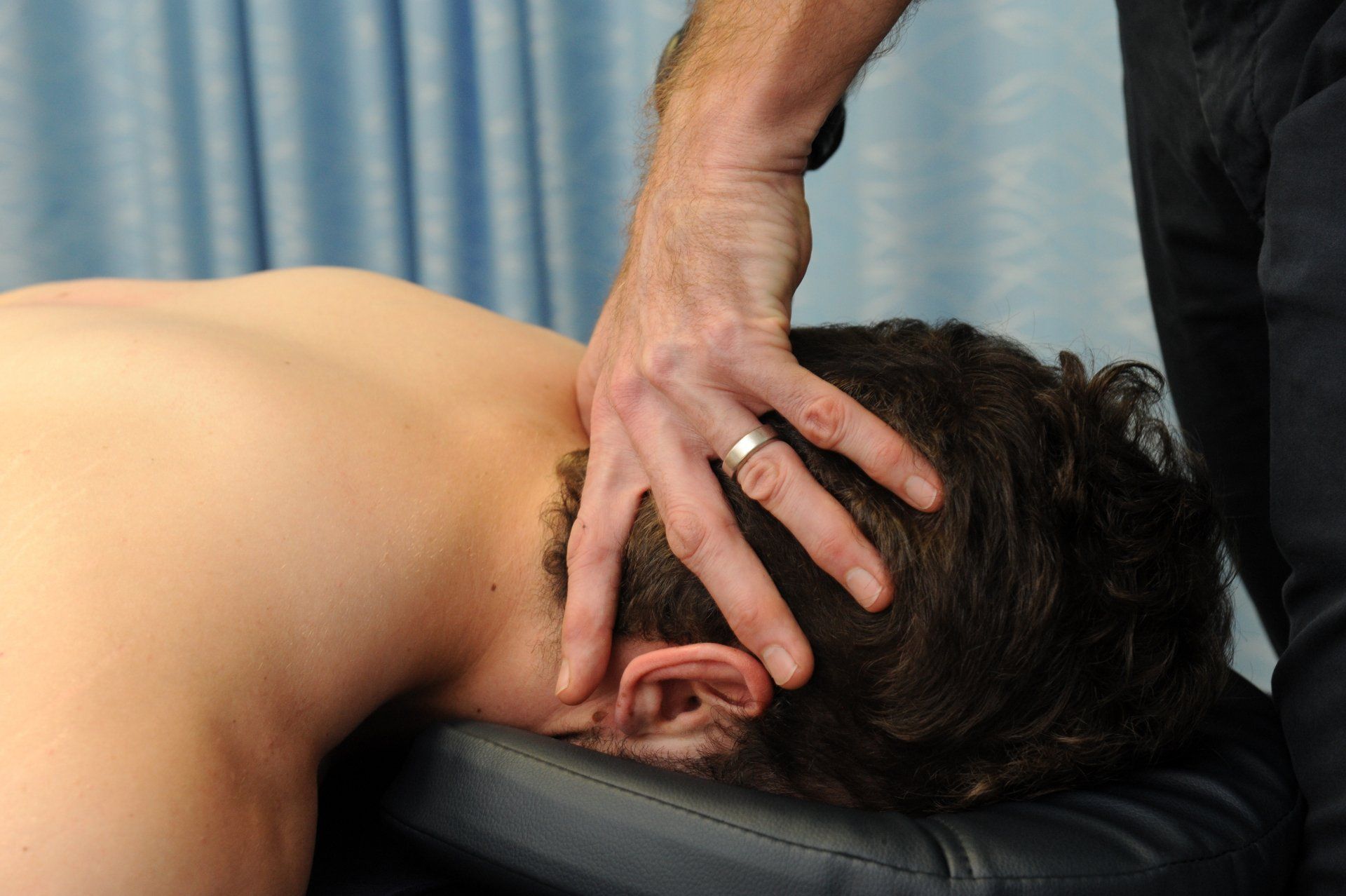Olecranon Stress Fracture
Posterior elbow pain is a common symptom of bone stress injury.

Download our patient guide for Olecranon Stress Fractures here.
Enter your details to receive your free guide now.
Olecranon stress fractures are rare overuse injuries of the proximal ulna, most commonly seen in athletes engaged in repetitive elbow extension activities. Early recognition and appropriate management are essential to prevent progression to complete fracture and to facilitate safe return to sport.
Anatomy 101
The olecranon is the proximal bony prominence of the ulna, forming the tip of the elbow and serving as the insertion site for the triceps brachii. It is subject to significant tensile and compressive forces during elbow extension, especially in throwing and weight-bearing activities. The articular surface articulates with the trochlea of the humerus, while the posterior cortex is exposed to repetitive microtrauma in athletes. The surrounding soft tissues, including the ulnar collateral ligament and the triceps tendon, play a role in both stability and the pathogenesis of stress injuries, with valgus extension overload and triceps traction implicated in fracture development.
Who gets it?
Olecranon stress fractures predominantly affect adolescent and young adult athletes, especially baseball pitchers, javelin throwers, gymnasts, and weightlifters.
The incidence is increasing with greater sports participation, and these injuries account for approximately 5% of elbow disorders in throwing athletes.
Diagnosing Olecranon Stress fracture
Diagnosis relies on a combination of clinical history and examination. Patients typically present with insidious onset of posterior elbow pain, worsened by activity and relieved by rest. Localized tenderness over the olecranon is common, and swelling may be present. Differential diagnosis includes tendinopathy, apophysitis, and other bone stress injuries. Early radiographs may be normal; thus, a high index of suspicion is required in at-risk athletes. MRI is the preferred modality for definitive diagnosis, revealing marrow edema and fracture lines, while CT can help classify fracture type and guide management.
Do I need a Scan?
Initial evaluation should include plain radiographs, though sensitivity is low in early stress injury. MRI is the gold standard for diagnosis and staging, while CT is useful for surgical planning in complex or displaced fractures.
Treatment
The latest evidence indicates that progressive, individualized physiotherapy protocols are effective in accelerating recovery and return to sport for athletes with olecranon stress fractures.
But there is no universally accepted protocol specific to this injury. The International Delphi Consensus on Bone Stress Injuries in Athletes recommends a multifactorial approach: initial rest and activity modification, followed by a staged rehabilitation program emphasizing pain-free range of motion, gradual strengthening of the triceps and forearm musculature, and correction of biomechanical risk factors such as throwing mechanics or training errors.
For nonoperative cases, early mobilization within pain limits is encouraged to prevent stiffness, with progressive loading introduced as symptoms resolve. Activity modification and rest are the first-line treatments for non-displaced or minimally displaced olecranon stress fractures, with immobilization considered for pain control. Physiotherapy focuses on maintaining range of motion, gradual strengthening, and correction of biomechanical risk factors.
Return-to-sport decisions should be based on clinical assessment, functional testing, and imaging confirmation of healing, rather than fixed timelines. Multidisciplinary consensus emphasizes the importance of psychological readiness and integrated care to optimize outcomes.
While exercise-based rehabilitation is critical, there is insufficient evidence to support adjunctive modalities such as cryotherapy beyond short-term analgesia, and their use should be limited.
Overall, individualized, progressive rehabilitation—coordinated with medical and surgical management—remains the cornerstone for safe and effective return to sport in athletes with olecranon stress fractures.
Will I need surgery?
Surgical intervention, typically tension band wiring or screw fixation, is reserved for displaced fractures, nonunion, or high-level athletes requiring rapid return to play. Protocols typically begin with immobilization for 2–4 weeks, then transition to active and passive range of motion exercises, followed by strengthening and sport-specific retraining once radiographic healing is confirmed. Rehabilitation should be individualized, emphasizing progressive loading and sport-specific retraining once pain resolves and radiographic healing is confirmed.
How long does it take?
Most non-displaced olecranon stress fractures heal uneventfully with conservative management, with return to sport typically expected within 3–6 months. Surgical cases may require longer rehabilitation, but outcomes are generally favourable.
Comorbidities, particularly multimorbidity (the presence of two or more chronic conditions), are associated with slower and less complete rehabilitation outcomes for patients with olecranon stress fractures. Patients with multimorbidity experience a significantly slower reduction in disability and functional recovery following injury compared to those with none or only one comorbidity.
Specific comorbidities such as osteogenesis imperfecta can increase the risk of recurrent fractures and may necessitate tailored rehabilitation protocols, as seen in paediatric populations.
Comprehensive assessment and individualized rehabilitation planning are essential for patients with significant comorbidities to optimize recovery trajectories and minimize complications.
Take Home Message:
Olecranon stress fractures should be considered in athletes with posterior elbow pain and a history of repetitive extension loading. Early diagnosis and appropriate management—primarily rest, activity modification, and targeted rehabilitation—are key to optimal recovery and prevention of complications.
Got elbow pain and want to get it sorted? Give us a call.
At Movement for Life Physiotherapy, we can assess and diagnose the cause of your elbow pain and let you know whether you have a olecranon stress fracture, early stress response, nerve entrapment, or if there is something else going on. With a clear diagnosis and tailored management plan, we'll help get you back to the things you love sooner.
Give us a call now or click on BOOK AN APPOINTMENT to book online.
Sources
- Davie, G., Samaranayaka, A., & Derrett, S. (2018). The role of pre-existing comorbidity on the rate of recovery following injury: A longitudinal cohort study. PloS one, 13(2), e0193019. https://doi.org/10.1371/journal.pone.0193019
- Debopadhaya, S., & Marmor, M. T. (2023). Frailty and comorbidity predict 30 day postoperative outcomes, independent of anatomical site of fracture. Archives of orthopaedic and trauma surgery, 143(8), 4697–4704. https://doi.org/10.1007/s00402-023-04764-7
- Furushima, K., Itoh, Y., Iwabu, S., Yamamoto, Y., Koga, R., & Shimizu, M. (2014). Classification of Olecranon Stress Fractures in Baseball Players. The American journal of sports medicine, 42(6), 1343–1351. https://doi.org/10.1177/0363546514528099
- Fujioka, H., Tsunemi, K., Takagi, Y., & Tanaka, J. (2012). Treatment of stress fracture of the olecranon in throwing athletes with internal fixation through a small incision. Sports medicine, arthroscopy, rehabilitation, therapy & technology : SMARTT, 4(1), 49. https://doi.org/10.1186/1758-2555-4-49
- Greif, D. N., Emerson, C. P., Allegra, P., Shallop, B. J., & Kaplan, L. D. (2020). Olecranon Stress Fracture. Clinics in sports medicine, 39(3), 575–588. https://doi.org/10.1016/j.csm.2020.02.005
- Jack, R.A., Dodson, C.C. (2021). Stress Fractures in Sport: Elbow. Fractures in Sport. Springer, Cham. https://doi.org/10.1007/978-3-030-72036-0_21
- McBride, A. P., Brais, G., Wood, T., Ek, E. T. & Hoy, G. Stress reactions and fractures around the elbow in athletes. (2021).
- Nuber, G. W., & Diment, M. T. (1992). Olecranon stress fractures in throwers. A report of two cases and a review of the literature. Clinical orthopaedics and related research, (278), 58–61.
- Onay, T., Çelen, Z. E., Öncül, S., & Abul, M. S. (2023). Long-term Functional Consequences of Surgically Treated Pediatric and Adolescent Olecranon Fractures: Does the Presence of Associated Fractures and Surgical Procedure Affect the Results?. Journal of pediatric orthopedics, 43(3), 135–142. https://doi.org/10.1097/BPO.0000000000002313
- Rao, P. S., Rao, S. K., & Navadgi, B. C. (2001). Olecranon stress fracture in a weight lifter: a case report. British journal of sports medicine, 35(1), 72–73. https://doi.org/10.1136/bjsm.35.1.72
- Schroeder, J. D., Trigg, S. D., & Capo Dosal, G. E. (2024). Bone Stress Injuries: Diagnosis and Management. American family physician, 110(6), 592–600.
- Smith, S. R., Patel, N. K., White, A. E., Hadley, C. J., & Dodson, C. C. (2018). Stress Fractures of the Elbow in the Throwing Athlete: A Systematic Review. Orthopaedic journal of sports medicine, 6(10), 2325967118799262. https://doi.org/10.1177/2325967118799262
- Zaremski, J., L., Pazik, M., Moser, M. W., Horodyski, M. (2022). Olecranon Stress Fracture Management Challenges in a High School Baseball Pitcher: A Case Report and Review of the Literature. Current Sports Medicine Reports 21(6), 171-173. DOI: 10.1249/JSR.0000000000000962








